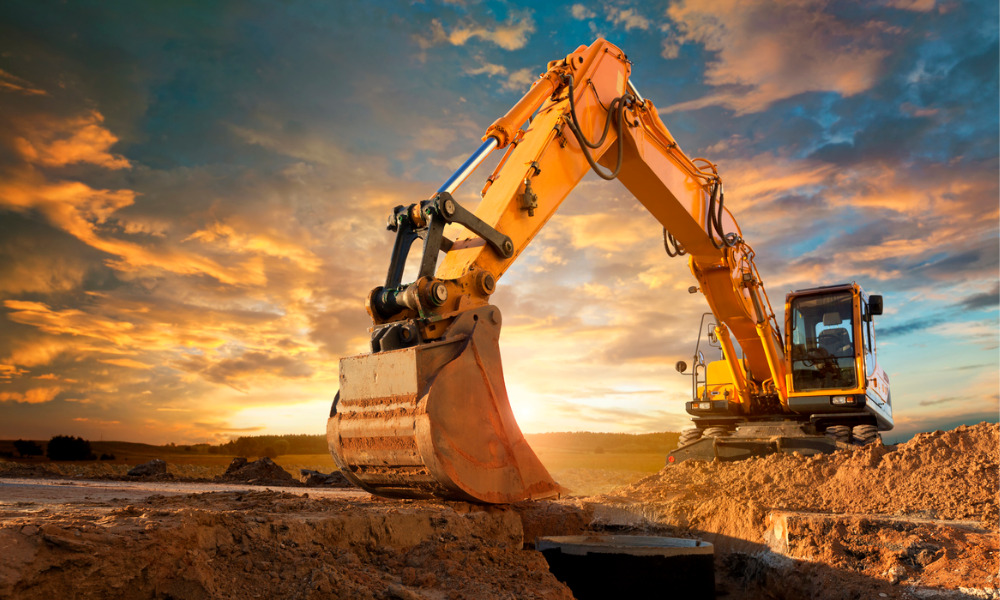Scissor Lift Rental: Safe and Efficient Solutions
Scissor Lift Rental: Safe and Efficient Solutions
Blog Article
Renting Vs. Acquiring Building And Construction Equipment: Making the Right Selection for Your Project
When embarking on a building job, among the crucial choices that project stakeholders and supervisors face is whether to get or lease construction tools. Both options have their advantages and downsides, making the choice an essential one in the job planning procedure. The choice rests on numerous elements such as cost considerations, task period, tools upkeep, adaptability, scalability, and risk management. Each component plays a vital function in determining the most suitable course for the job's tools needs. aerial lift rental. Allow's discover these elements additionally to comprehend how they affect the decision-making process and eventually the success of the project.
Price Factors To Consider
When examining the economic aspect of renting out versus acquiring construction equipment, the lasting expenses and upfront expenses should be meticulously considered. Leasing equipment commonly calls for reduced initial repayments compared to purchasing, making it an attractive alternative for temporary tasks or specialists with budget restrictions. Renting gets rid of the demand for large resources investments and minimizes the monetary threat connected with equipment ownership, such as upkeep and depreciation expenses. However, in the future, consistently renting out equipment can gather higher costs than buying, especially for extended tasks.
On the various other hand, getting building and construction devices includes greater in advance prices but can cause long-lasting cost savings, especially for long-lasting projects or constant individuals. Possessing tools offers flexibility, convenience, and the capacity for resale worth once the project is finished. Additionally, having equipment enables modification and experience with specific equipment, possibly boosting effectiveness and efficiency on-site. Inevitably, the decision between renting out and purchasing construction tools pivots on the project's duration, regularity of use, spending plan considerations, and lasting economic goals.
Project Period

Conversely, for long-lasting jobs or continuous building and construction job, purchasing equipment might be the much more affordable alternative. Getting tools can cause cost savings over time, specifically if the devices will certainly be often utilized. In addition, having tools gives a sense of control over its accessibility and enables modification to fit particular project requirements.

Equipment Maintenance
Provided the crucial duty project period plays in determining the most affordable technique in between purchasing and renting building and construction devices, the focus now changes in the direction of taking a look at the necessary aspect of devices upkeep. On the other hand, having devices calls for an aggressive strategy to maintenance to protect against break downs, make certain security, and extend the equipment's life-span. Eventually, a well-kept building and construction devices fleet, whether rented or possessed, is essential for the efficient and effective conclusion of building jobs.
Versatility and Scalability
In the world of building equipment monitoring, the facet of flexibility and scalability holds substantial relevance for project performance and resource application. Choosing to lease building tools provides a high level of flexibility as it allows for the quick modification of equipment types and amounts based on the progressing demands of a task.
In addition, scalability, another crucial variable, is inherently linked to versatility. Leasing construction equipment supplies the advantage of conveniently scaling operations up or down as job needs vary. Specialists can swiftly add or exchange devices to match the job's changing requirements without the constraints of owning properties that may become underutilized or out-of-date. This capability to scale resources efficiently can cause price financial savings important link and enhanced project timelines, making renting out a beneficial choice for tasks requiring versatility and receptive source allocation.
Threat Administration
Reliable threat monitoring in building devices operations is vital to making sure job success and mitigating potential economic losses. Construction jobs naturally include various threats, such as tools malfunctions, mishaps, and task delays, which can significantly impact the project timeline and spending plan. By thoroughly taking into consideration the threats connected with owning or renting out construction equipment, project managers can make educated choices to decrease these prospective hazards.
Renting construction tools can provide a degree of risk mitigation by moving the obligation of upkeep and fixings to the rental business. This can reduce the economic problem on the project owner in case of unanticipated equipment failures (construction equipment rentals). Furthermore, leasing offers the flexibility to access customized equipment for particular project stages, reducing the threat of possessing underutilized equipment
On the other hand, possessing building and construction devices offers a sense of control over its use and maintenance. Nonetheless, this likewise implies bearing the full responsibility for repair services, maintenance expenses, and depreciation, boosting the economic risks associated with tools possession. Mindful threat analysis and consideration of elements such as task duration, equipment use, and upkeep needs are essential in determining one of the most appropriate alternative for efficient risk management in construction jobs.
Conclusion
Finally, when deciding between purchasing and renting building and construction devices, it is vital to take into consideration expense, project period, devices maintenance, scalability, adaptability, and threat monitoring. Each element plays a critical role in figuring out the most suitable option for the project handy. By meticulously examining these aspects, project supervisors can make an educated choice that lines up with their budget, timeline, and general job objectives.

Report this page